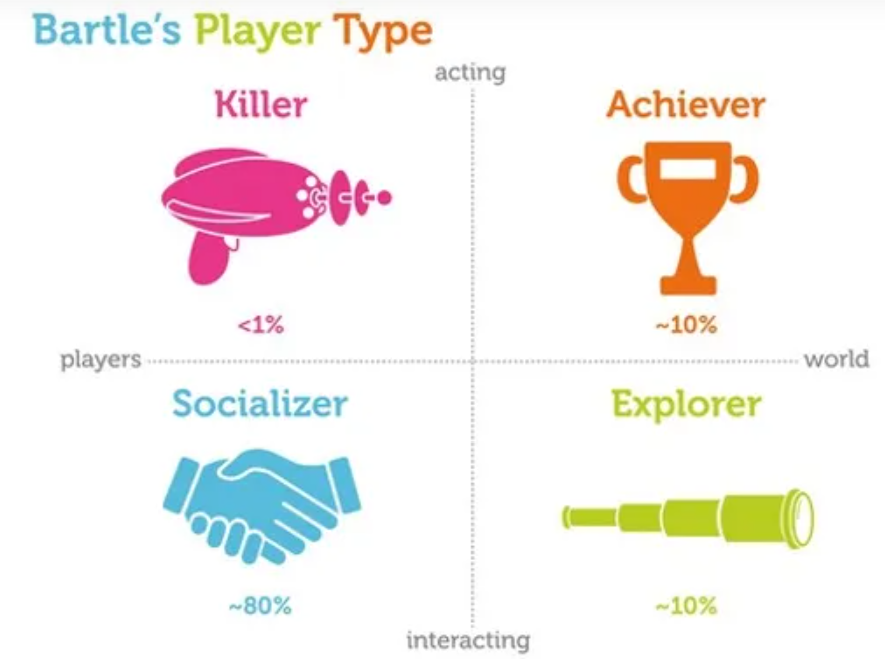In the arena of student engagement, there are plenty of frameworks for exploring how students can engage in shaping their learning.
We’re thinking of things like Sparqs’ student partnership staircase, as well as considerable research into the students with whom we might be engaging less successfully. But there is less that asks why students would want to give of their time and emotional energy to engage in quality in the first place.
On one level the answer seems obvious – it’s to improve the learning experience. It’s an inherent part of being a student, no?
Well, if that was enough by itself, surveys would have 100% completion rates, vacancies for student rep roles would be non-existent, and there would be a constant tsunami of student ideas and suggestions.
This, of course, is why student engagement is such a complex and fascinating dimension of higher education. What are the barriers, what are the motivations and what do students get out of the process?
Game theory
In a recent workshop on student engagement in professional services, we began exploring this question through a model from video gaming. Bartle’s taxonomy was developed in 1996 by a British academic, and outlines four gamer types based on their focus and actions.
They are the achiever (who focuses on what’s important to master the game), the explorer (who is there for the fun of the game and enjoys discovering more than winning), the socialiser (for whom the game is merely the arena for some enriching human interaction), and the killer (who relishes the limitless freedom to battle against others).
There is even a test you can do to find out your type, though like with so many taxonomies the definitions can overlap and change.
Even if you’re not a hardcore video gamer, you can probably identify yourself as one of the four types if you’ve played something like Wordle. You’re an achiever if you enjoy solving the daily word quiz in as few lines as possible, an explorer if you appreciate learning new words, a socialiser if you love chatting to others about each solution, and a killer if you want to beat everyone to the longest winning streak.
In a university context, you might apply Bartle to the general motivations of students who might learn purely for the certification, for learning’s sake, to make friends, or to be the best. We wonder, though, what value these types could offer specifically to student voice, where students will approach processes of feedback, enhancement and representation with various motivations. We propose repurposing the Bartle types as follows.
Bartle’s engagers
The achiever is motivated by the outcomes of student engagement, whether improvements to a course, a professional service or institutional policy. They’ll fill out a survey hoping their views are acted on, or as a course rep will expect their ideas to create visible improvements. Their ambition for enhancement will be impressive, though whether they take everyone else with them is less certain.
The explorer finds the journey of student engagement more interesting than the outcome. They might enjoy lifting the bonnet of quality to critically reflect on a survey’s wording, how a focus group operates or what a rep job description says. They may also enjoy identifying the transferable skills they gain from engagement and representation. While they might not articulate a clear picture of the ideal learning experience, they could probably write a good Wonkhe article about how you get there.
The socialiser enjoys the interactivity of a class discussion or the sense of belonging that being a rep provides. Filling out an anonymous survey will be less stimulating than bouncing off others’ ideas in a focus group, and they might skilfully perceive who is excluded from engagement. The socialiser could even bring a strong empathy to staff-student partnerships and will tell a good story about how uplifting such activity is. They might, however, struggle to express the impact of student engagement in a metric or report.
Finally, the killer sounds like the last person you’d want involved, but their critical thinking can have value. They’ll eagerly articulate radical new ideas and will quickly criticise established ways of learning and teaching. While they won’t be the most diplomatic committee member, they’ll be first in line to help organise direct student action or spark conversations about rethinking the post-pandemic university.

Ready player one!
So what’s the value of this reimagined taxonomy? Well, one implication is how staff, management and students’ unions can draw those groups into the quality process.
- For instance, the killer could be attracted by a students’ union that boasts a strong campaigning instinct.
- The explorer will be tempted by accreditation for a comprehensive range of representative and engagement opportunities.
- The socialiser might need free lunches and fun workshops before they tell you something useful about the quality of learning.
- The achiever will lap up very practical course rep training and enjoy hearing about the outcomes of the student voice in internal review processes.
This could mean customising our messages about the value of shaping learning or about rep recruitment and recognition, but given student diversity heavily shapes our sector already this shouldn’t be difficult. How much students will identify as (or be willingly pigeonholed into) these types is worth further consideration, and there are also questions about the proportions of each group in any given cohort and what that means for the resourcing of student engagement systems.
One way of beginning to explore the value of this taxonomy could be to get some self-defined achievers, explorers, socialisers and killers into a conversation together to see what happens. If nothing else, it will be a reminder of the importance of ensuring that student engagement works for all.




















As a ludologist who did part of his research using on Bartle’s taxonomy, please be especially careful when using it outside its intended context. It’s needlessly reductive and not even very good in the context it was intended for.
Indeed John, and thank you. Our penultimate paragraph highlights some notes of caution and potential limitations, and we also earlier mention the fact that such taxonomies have overlapping definitions. Not everyone will fit into one quadrant even mostly let alone entirely. What it does do is provide a basis for thinking about motivations and what that might mean for systems. if it sparks other conversations and ideas, all the better. It would be interesting to learn a little more about your sense that it wasn’t even good in its original context: was that down to players not neatly fitting into… Read more »